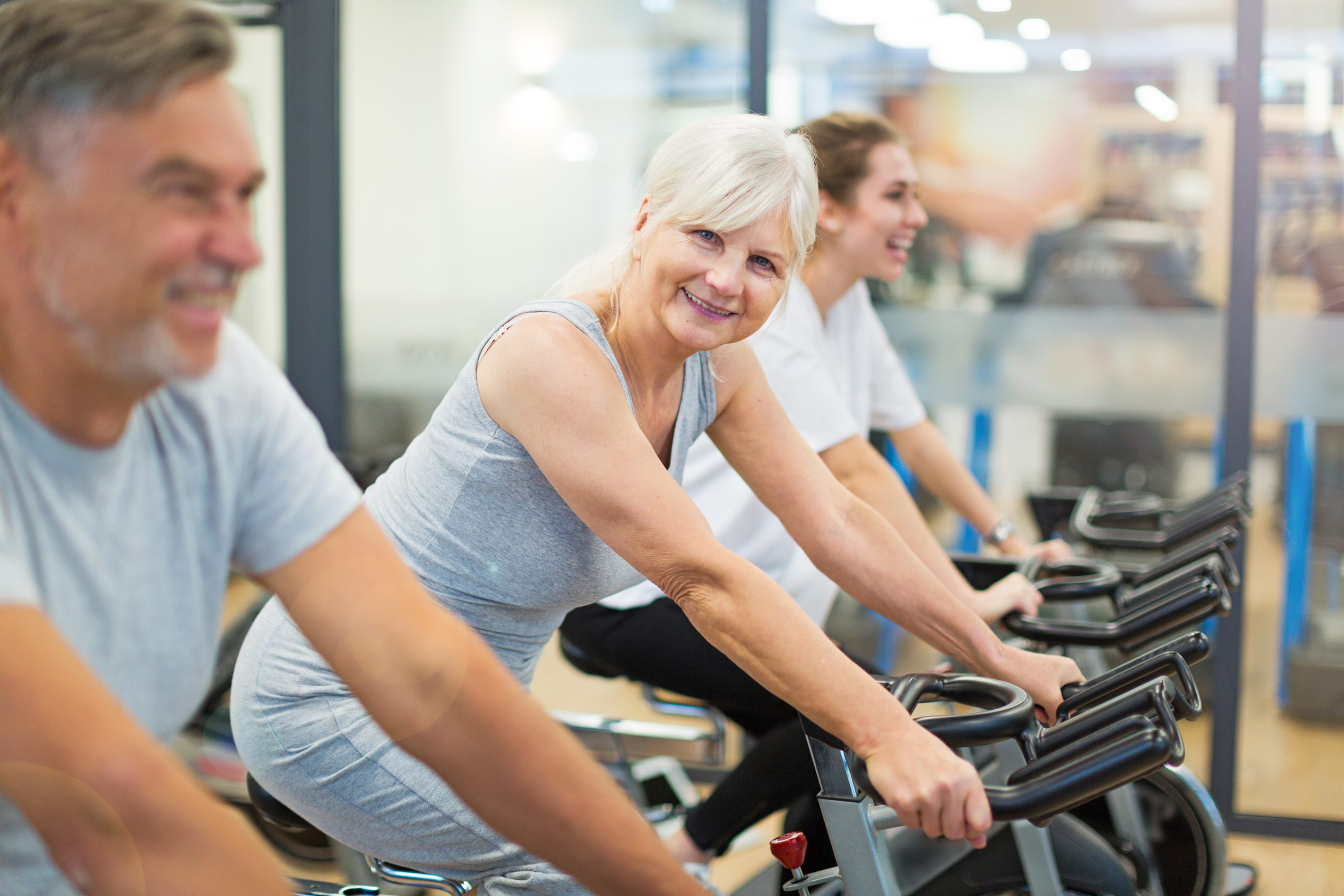Looking for a low impact option to strengthen your knee muscles while reducing pain and inflammation? Then the best course of action may be to hop on a stationary.
Our bodies crave quality movement!
So much so that several phrases have popped up in health & wellness communities across the globe. Terms such as “motion is lotion,” “rest is rust,” or “use it or lose it” have all come about to mean the same thing.
We need to move to stay healthy! But… what if that movement is painful? Common activities like jogging or even walking can be too hard for our joints to handle. However, there is another option:
The Stationary Bike.
Stationary bikes (recumbent or upright) provide an excellent alternative for those unable to walk, jog, or perform traditional strength exercises.
However, there are several things to remember when using a stationary bike on your journey to healthy knees.
5 Tips When Using a Stationary Bike for Knee Pain Reduction
While riding a stationary bike is good for knee pain, it must be performed correctly (as with all things) to avoid unnecessary stress or strain.
Follow the tips below to ensure a safe and healthy ride any time you hop on:
Tip #1: Low-Moderate Speed
The best part of a stationary bike? It goes nowhere! That means there’s no one to race, no finish line to push yourself too hard towards.
You can start slow and comfortably without pain or pressure to speed up any time soon. Find a pace that fits your knees’ needs.
Tip #2: Use Proper Form
While bikes are considered low impact, they are still a repetitive motion. This means, if things are not aligned properly, pain can appear with overuse.
Let’s make sure everything is set up to succeed — from seat position to pedaling form.
Seat Position: When you extend one leg while pedaling, your leg should almost be locked out (fully straight). Not completely, but very close. Adjust the seat up or down/forward or backward to reach this desired height.
The caveat on this is if you have pain when you extend your leg too far. Decrease the range of motion a bit by sliding your seat forward. You want to work within your pain-free range of motion and slowly increase as you progress.
Now you also want to be aware of the opposite – bending your knee too much (see image above).
If your knees are staying too bent, the excess strain on the patella (kneecap), can increase your likelihood of increasing pain from arthritis. Be sure you aren’t sitting too close to the pedals.
As well, ensure your knees remain upright when pedaling, meaning don’t let your legs fall out to the sides. While there may be a bit of flare depending on your specific bone structure, our knees were not designed to flare out dramatically and can cause pain in the future if not kept in check.
Tip #3: Low or No Resistance at First
Just as riding the bike as quickly as possible won’t provide the pain-free benefits we seek, increasing the resistance too soon will have the same effect.
First, you must find the tempo and resistance you can do without pain. Then, slowly as you gain strength, you can increase the resistance.
Tip #4: Start Off Slow
A stationary bike is a great option for those with knee pain to remain healthy and strengthen the muscles around the joint… when done consistently.
Start with something sustainable like hopping on the bike for 5-10 minutes just 3-4 times a week. Then as you gain confidence and strength, you can up the time to about 20 minutes, then the days to 5 or 6 days a week.
Just remember to give yourself quality recovery time in between biking bouts.
Tip #5: Use It to Complement Your Routine
Oftentimes when we’re trying to reach a specific goal, it may take a few tries for new habits to form. Getting out of pain is no different.
Find a time of day that you can consistently ride. Or, if you are already performing additional rehab, consider using the stationary bike to assist your other daily corrective exercises to help boost the benefits of both!
